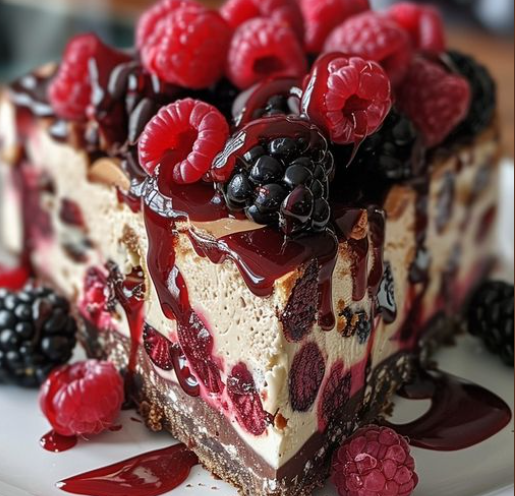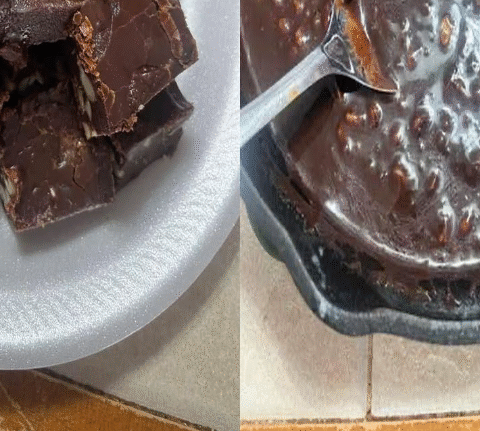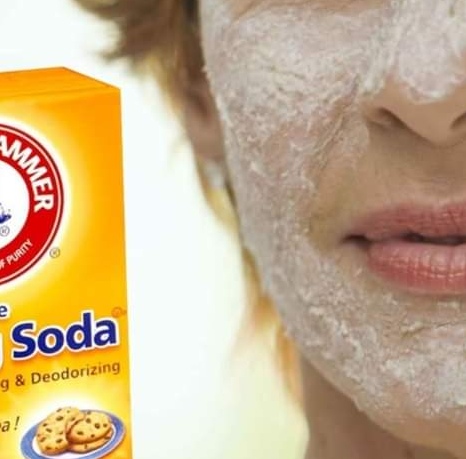Black Forest Cheesecake Symphony
Imagine the decadence of a chocolate cherry Black Forest cake fused with the creamy richness of cheesecake. That’s exactly what your **Black Forest Cheesecake Symphony** offers: chocolate, cherries, silky cheesecake, and a luscious ganache topping—an indulgent showstopper dessert. In this guide, you’ll get everything you need: ingredient rationale, method with detailed steps, chef’s notes, variations, troubleshooting, nutrition, storage, and FAQs to ensure your cheesecake comes out perfect every time.
Overview & What Makes This Dessert Special
Black Forest cake is traditionally chocolate cake layered with cherries and whipped cream. This recipe transforms that idea into a cheesecake format: you get a chocolate (Oreo) crust, cherry swirls, rich chocolate cheesecake, and a silky chocolate ganache topping—plus fresh berries and chocolate shavings for garnish. It’s layered, dramatic, and perfect for celebrations.
Because cheesecake is inherently delicate, combining it with cherries and chocolate requires balance in texture, moisture, and stability. The Oreo cookie crust gives a sturdy base; the sour cream and cocoa in the cheesecake create smoothness and depth; the cherry pie filling gives bursts of fruit; and the ganache ties it all together with a glossy finish.
What You’ll Learn in This Guide
- Full ingredient list (US & metric) with explanation of each component
- Step‑by‑step instructions (with tips and photos, if you add them)
- Chef’s insights and common pitfalls to avoid
- Creative variations & flavor twists
- Nutrition estimates and health notes
- Storage, slicing, reheating (if relevant), and food safety advice
- 10 detailed FAQs to cover any issues
- Presentation & serving suggestions
Ingredients & Why They Matter
Original Ingredients (as given)
- Oreo crust: 24 Oreo cookies, finely crushed; ¼ cup unsalted butter, melted
- Cheesecake filling: 3 (8‑oz) packages cream cheese; 1 cup granulated sugar; ¾ cup sour cream; ⅓ cup unsweetened cocoa powder; 1 teaspoon pure vanilla extract; 3 large eggs; 1 cup cherry pie filling
- Ganache topping: ⅔ cup heavy cream; 6 oz semisweet chocolate, chopped
- Garnish: Fresh raspberries, blackberries; chocolate shavings
Expanded & Metric Version
- For the Oreo Crust:
- 24 Oreo cookies (≈ 300 g, crushing yields ~2¾ to 3 cups crumbs)
- ¼ cup unsalted butter, melted (≈ 56–60 g)
- For the Cheesecake Filling:
- 3 × 8‑oz (226 g) cream cheese, room temperature → ~678 g total
- 1 cup (≈ 200 g) granulated sugar
- ¾ cup sour cream (≈ 180 mL)
- ⅓ cup (≈ 33–40 g) unsweetened cocoa powder
- 1 teaspoon (≈ 5 mL) pure vanilla extract
- 3 large eggs (≈ 150 g total)
- 1 cup cherry pie filling (≈ 240 mL) — you may swirl or layer
- For the Ganache Topping:
- ⅔ cup heavy cream (≈ 160–165 mL)
- 6 oz semisweet chocolate, chopped (≈ 170 g)
- Garnish:
- Fresh raspberries, blackberries (quantity as desired)
- Chocolate shavings (use a bar or baking chocolate for clean shavings)
Ingredient Functions & Tips
- Oreo crust: forms a sturdy, chocolatey base that supports the filling. The cookie crumbs + melted butter bind to create a solid layer.
- Cream cheese: the foundation of cheesecake—gives creaminess and body. Room temperature ensures smooth blending without lumps.
- Sugar: sweetens and helps the cheesecake set (via osmosis with eggs).
- Sour cream: lightens texture, adds tang, and helps resist cracking by keeping moisture.
- Cocoa powder: gives chocolate flavor in the filling without making it overly dense or sweet.
- Vanilla extract: enhances flavor and rounds out the chocolate.
- Eggs: act as binding and structure; add them one at a time to prevent over‑whipping.
- Cherry pie filling: adds the signature cherry bursts; swirl or fold in carefully so you retain the visual contrast.
- Ganache (cream + chocolate): gives a glossy finish, richness, and additional chocolate layer.
- Garnishes (berries & chocolate shavings): provide visual appeal, fresh fruity lift, and texture contrast.
Step‑by‑Step Instructions
1. Preheat & Prepare Pan
Preheat your oven to **350 °F (≈ 175 °C)**. Grease a 9‑inch (23‑cm) springform pan (bottom and sides) and line with parchment (optional but helps with release). You may also wrap the exterior of the pan with foil if using a water bath.
2. Make the Oreo Crust
- Crush the 24 Oreo cookies to fine crumbs. You can use a food processor or place them in a zip bag and roll with a rolling pin.
- Combine the crumbs with melted butter in a mixing bowl. Stir until the mixture resembles wet sand and holds together when pressed.
- Press the mixture firmly into the bottom of the prepared springform pan. Use the bottom of a measuring cup or flat glass to compact it evenly. You may also press a little up the sides if preferred (⅓ to ½ inch) for some side coverage.
3. Prepare the Cheesecake Filling
- In a large bowl (or bowl of a stand mixer), beat the cream cheese and sugar together until smooth and creamy, with no lumps.
- Add sour cream, cocoa powder, and vanilla extract. Mix until incorporated—but do not overmix.
- Add eggs one at a time, mixing on low speed or by hand just until each is incorporated. Avoid overbeating air into the batter.
- Gently fold in the cherry pie filling (you may swirl or layer, but don’t overmix such that the batter turns pink entirely).
- Pour the cheesecake batter over the crust in the springform pan, smoothing the top lightly.
4. Bake the Cheesecake
Bake in the preheated oven for **50 to 55 minutes**, or until the edges are set and the center is slightly jiggly (should still move a bit in the center). The internal temperature (if measured) should reach about 150–155 °F (65–68 °C). Do not overbake—overbaking leads to cracks and dryness.
5. Cool & Chill
- Once baking is complete, turn off the oven and crack the oven door open; allow the cheesecake to sit inside for 1 hour. This gradual cooling helps prevent large cracks.
- Remove from oven and cool completely at room temperature (~2 hours).
- After it cools, refrigerate for at least **4 hours**, or preferably overnight. Chill thoroughly before applying ganache or slicing.
6. Prepare the Ganache Topping
- Heat the heavy cream in a saucepan over medium heat until it just begins to simmer (do not boil vigorously).
- Pour the hot cream over the chopped semisweet chocolate in a bowl. Let sit undisturbed for about 1 minute, allowing the chocolate to soften.
- Gently stir the mixture until smooth and glossy, forming the ganache. If any bits remain unmelted, microwave very briefly (5–10 seconds) and stir again.
- Allow the ganache to cool slightly (just warm, not thick) before pouring over the chilled cheesecake surface.
- Pour the ganache evenly over the top of the cheesecake, letting it drip slightly over the edges if desired.
7. Garnish & Serve
- After the ganache sets slightly (but still soft), garnish with fresh raspberries and blackberries around the top.
- Use a sharp knife or chocolate to make **shavings** (use a vegetable peeler on a chocolate bar) and sprinkle them over the top for contrast.
- Optionally, you can pipe whipped cream or do decorative dollops around the edges.
- Before serving, let cheesecake sit ~10–15 minutes at room temperature to soften slightly for best texture.
- Slice with a hot, clean knife (dip in hot water between cuts) to get clean slices.
Chef’s Tips, Tricks & Pitfalls to Avoid
- Use room temperature ingredients: Let cream cheese, sour cream, and eggs sit out until softened to ensure smooth texture without lumps.
- Avoid overmixing: Overwhipping can incorporate too much air and lead to cracks or deflation.
- Use a water bath (bain‑marie): If your oven tends to be dry or you want extra protection against cracks, place the springform pan in a shallow pan filled with hot water (wrapped well in foil) during baking.
- Gradual cooling: Allow the cheesecake to cool in the oven with the door cracked, then at room temp, then chill. Sudden temperature shifts cause cracks.
- Don’t overbake: The center should jiggle slightly—carryover heat will finish cooking as it cools.
- Use a high-quality chocolate: For ganache, good semi-sweet chocolate yields shinier, more stable ganache.
- Pour ganache while cheesecake is cold: But not icy—if it’s too cold, ganache may crack; if too warm, cheesecake may soften.
- Slice cleanly: Use a long, thin, sharp knife, and wipe between cuts. Warm the knife under hot water and dry to help glide through ganache.
- Garnish last: Add berries and shavings just before serving to preserve freshness and avoid sogginess.
Variations & Creative Twists
White Chocolate Cherry Version
Use white chocolate in the ganache (or mix white & semi in a swirled topping). You could also fold in some chopped white chocolate chunks to the cheesecake batter or swirl white chocolate in before baking.
Layered Cherry Swirls
Instead of folding in cherry pie filling, you can layer: pour part of the chocolate cheesecake batter, dollop cherry filling, swirl gently with a knife, then pour remaining batter and top with more cherry. This gives a more distinct layered appearance.
Nutty or Crunchy Additions
Mix in chopped toasted pecans or almonds into the crust or sprinkle over garnish. You could also use a nut‑based crust (almond or pecan) under or in addition to Oreo.
Fruit Variations
Substitute cherry pie filling with fresh or preserved cherries, raspberries, or a mix of berries for a different fruit-forward version. You can also add a fruit compote drizzle instead of ganache in part.
Alcohol‑Infused Option
Add a splash of Kirsch (cherry brandy) or cherry liqueur into the cherry pie filling or fold into the batter for an adult twist.
Chocolate Ribbon / Marble Effect
Reserve a portion of the cheesecake batter, tint it dark (or extra cocoa), and swirl strips or ribbons through the lighter batter for a marbled effect.
Mini or Individual Cheesecakes
Make this recipe in mini 4‑ or 6‑inch springform pans, or in ramekins or jars as portable desserts. Adjust bake time (shorter) accordingly.
Nutrition & Health Notes
Below is an approximate nutrition estimate per serving (assuming ~12 slices). Please use your specific ingredients for precise values.
| Nutrient | Estimate per Slice (1/12) |
|---|---|
| Calories | ~ 450‑550 kcal |
| Total Fat | ~ 28‑36 g |
| Saturated Fat | ~ 15‑20 g |
| Carbohydrates | ~ 35‑45 g |
| Sugars | ~ 20‑30 g (sugar + cherries + ganache) |
| Protein | ~ 6‑9 g |
| Fiber | ~ 1‑2 g |
| Sodium | ~ moderate (from cream cheese, crust, chocolate) |
Health & Moderation Tips:
- This is a rich, indulgent dessert—best enjoyed in moderation.
- You may reduce sugar slightly or use a lower-sugar cherry filling (or fresh cherries + syrup) to cut sweetness.
- Use light or reduced-fat sour cream or part‑skim cream cheese if you want a lighter version (though texture may vary).
- Use dark chocolate instead of semi‑sweet in ganache to reduce sugar content and intensify flavor.
- Balance with a lighter meal beforehand or pair with fresh fruit on the side.
Storage, Serving & Food Safety
Storage & Refrigeration
- Once cooled and topped with ganache and garnish, cover the cheesecake (loose plastic wrap or cake dome) and refrigerate.
- Consume within **4–5 days** for best flavor and texture. Over time, crust may soften and moisture may migrate.
- You can remove garnish before storing to preserve texture (berries may bleed). Add fresh garnish just before serving.
- Freezing: cheesecake can be frozen (without fresh fruit garnish). Wrap tightly (foil + plastic) and freeze up to 2–3 months. Thaw overnight in the fridge, then garnish fresh. Note: ganache may dull slightly but remains fine.
Slicing & Serving Best Practices
- Before slicing, let cheesecake sit ~10–15 minutes at room temp to soften slightly for cleaner cuts.
- Use a long, sharp knife or chef’s knife; warm the blade (dip in hot water, wipe dry) and make straight, confident cuts.
- Wipe the blade between slices to prevent drag and mess.
- Serve slices on chilled plates or room‑temperature plates (not super cold) so ganache doesn’t stiffen too fast.
Food Safety & Hygiene
- Use fresh, good-quality dairy ingredients; discard if sour or off.
- Avoid leaving cheesecake at room temperature for extended periods (> 2 hours, or less in warm climates).
- Cover between uses to prevent odor absorption from other foods in fridge.
- Use clean utensils and knives when slicing to avoid contamination.
Troubleshooting & Common Issues
- Cheesecake cracks: Overbaking, too much mixing, or sudden cooling. Use a water bath, reduce mixing, cool gradually.
- Ganache cracks or doesn’t spread: Cheesecake too cold or ganache too thick/hot. Let ganache cool a touch and cheesecake slightly warm.
- Cherry filling sinks or bleeds too much: Swirl lightly rather than fold vigorously. Use thicker cherry filling or reduce liquid in filling.
- Crust becomes soggy: Press crust firmly, bake slightly before filling (optional), or avoid pressing garnish berries directly over crust edge.
- Slices are messy: Use a warm knife, wipe between cuts, let cheesecake rest before slicing.
- Cheesecake too dense or heavy: Don’t overmix, ensure ingredients are room temp, avoid adding too many churned air bubbles.
10 FAQs You Might Ask
1. Do I need to prebake the crust?
In this recipe, you press the Oreo crust and pour filling directly over it. If you worry it’ll get soggy, you can blind bake it for ~8 minutes at 350 °F before adding filling. Just be careful not to burn the crust.
2. Should I use a water bath (bain‑marie)?
Using a water bath helps moderate oven heat, reduce cracks, and maintain moisture. Wrap the springform pan in foil and place it in a pan of hot water that comes up ~1 inch. Many cheesecake bakers recommend this for best results.
3. Can I use frozen cherries or homemade cherry compote?
Yes — thaw and drain excess syrup so it’s not overly wet. Use thick compote rather than watery fruit to avoid overhydrating the cheesecake.
4. Can I omit the ganache topping?
Yes — the cheesecake is still delicious without ganache. You could instead dust with cocoa powder, drizzle melted chocolate, or top with whipped cream and cherries.
5. How do I prevent the cheesecake from sinking or collapsing?
Don’t overmix, bake gently, avoid opening the door too soon, cool gradually, and ensure the filling is not overly heavy on fruit (soaked fruit may collapse structure).
6. Can I halve or double the recipe?
Yes — just adjust ingredient amounts and baking time (smaller pan → less time; larger pan → more time). Watch for doneness cues (jiggle, internal temp).
7. What size pan works?
A 9‑inch (23 cm) springform pan works well. You could use 8‑inch (deeper) — just expect slightly longer bake time. Avoid pans much larger or shallower unless adjusting quantities.
8. Can I make this ahead of time?
Yes — you can bake the cheesecake a day ahead and refrigerate overnight before adding ganache and garnish. This often helps flavors meld.
9. What’s best temperature for serving?
Serve slightly chilled but not ice‑cold — about 15 minutes at room temp helps soften ganache and improve flavor. Avoid serving too warm, or cheesecake may slump.
10. How long can leftovers stay good?
Stored properly in the refrigerator (covered), the cheesecake is best eaten within 4–5 days. After that, texture and flavor may degrade. Frozen slices (sans fresh berries) last up to 2–3 months.
Presentation & Serving Suggestions
- Slice on chilled or room‑temperature plates so ganache doesn’t stiffen too fast.
- Garnish slices individually with a few berries and chocolate shavings for elegance.
- Serve with a small spoon of warm cherry compote or drizzle of cherry syrup on the plate.
- Offer optional whipped cream dollops to accompany each slice.
- For special events, serve with a berry sauce (raspberry coulis, cherry syrup) plated under or beside the slice.
- Dust a light sprinkle of cocoa powder or powdered sugar around the edges of the plate for aesthetics.
- Accompany with coffee, dessert wine, or a small scoop of vanilla ice cream for contrast.
Conclusion & Final Thoughts
Your **Black Forest Cheesecake Symphony** is a showpiece dessert that combines chocolate, cherries, and cheesecake in one luxurious composition. With attention to technique—gentle baking, cooling, and careful layering—you’ll deliver a dessert that’s not only delicious but also visually stunning. Use the chef tips, troubleshooting suggestions, and variations above to adapt the recipe to your oven, flavor preferences, or dietary needs.
Would you like me to format this into a **printable recipe card**, a metric‑only version, or a shorter “kitchen cheat sheet”? Just let me know and I’ll prepare it for you.






